Average sizes and life expectancy for this breed:
Known as the cat with a smiling face, Somalis have a medium-sized body with a unique appearance. Somalis are highly intelligent, good-natured and they genuinely enjoy human company. They are even more friendly and loving than their Abyssinian cousins.
Somali cats are a mix of beauty and disposition. They are the essence of everything most cat lovers want in a feline companion – intelligent, energetic, attentive and enthusiastically engaged in everything that catches their curiosity.
Somalis are devoted, affectionate, brilliant and very interactive with their human companion and their environment. Their high energy and inquisitiveness make them extremely interested in everything around them and what their family is doing. They like having a great view of their surroundings, so expect them to find them perched on top of the refrigerator, furniture, and bookcases.
The Somali is an incredibly beautiful cat. They have a ticked coat that comes in two lengths, short-haired and semi-longhaired and a range of colours. The combination of their ticked fur, stunning facial markings, large ears and bright, expressive eyes gives the Somalis a wild look that easily captivates many cat lovers.
Considering their origin, it’s easy to say that they are “just” a long-haired version of the Abyssinian cats. But any Somali cat owner will tell you differently!
See available kittens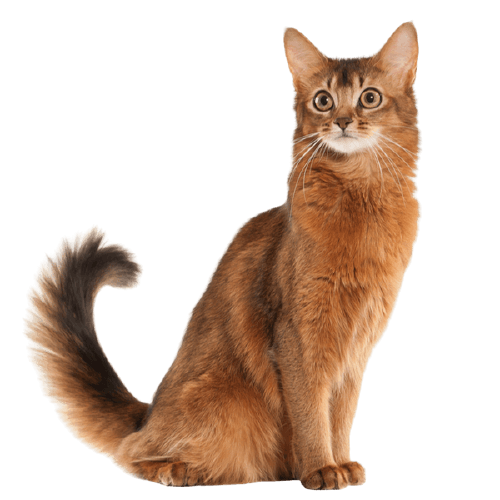

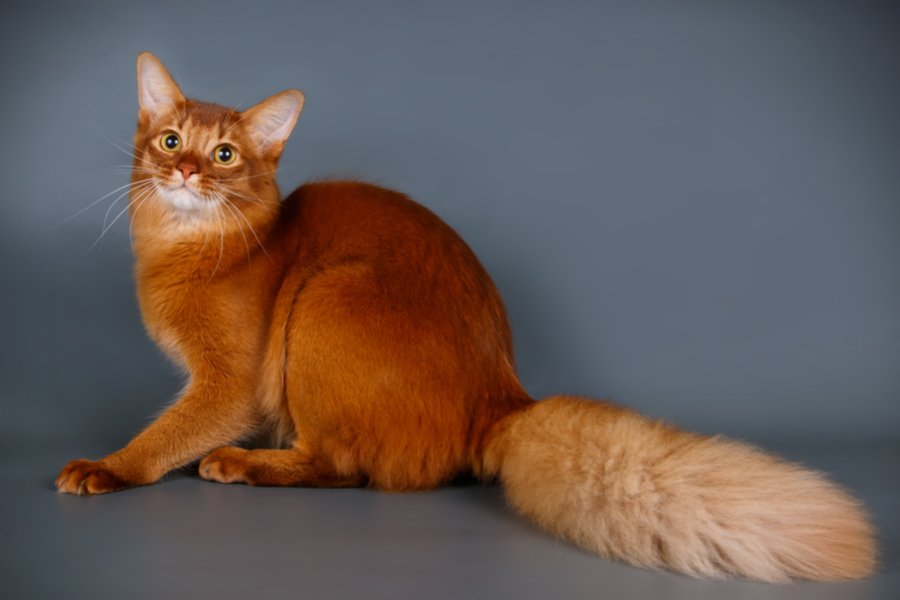


Despite what their name suggests, this cat breed was not developed in Somalia, but the United States. The name Somali was chosen due to the breed's ancestors, the Abyssinian. Somalia borders Abyssinia, which is modern day Ethiopia.
The history of this semi-long haired cat breed is cloudy, but it is believed breeding began in the early 1960s by an Abyssinian breeder. Abyssinians have always been used for outcrossing for Somalis to preserve a healthy gene pool.
One of the first Somali breeders, Evelyn Mague founded the Somali Cat Club of America. This club worked to grant the breed championship status by the CFA, which they got in 1979. The breeder was later accepted in Europe.
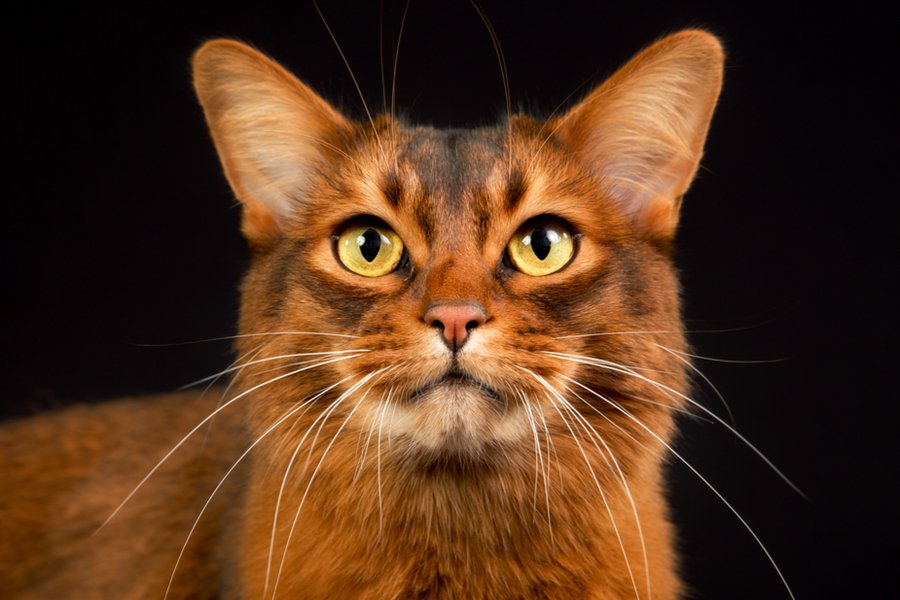
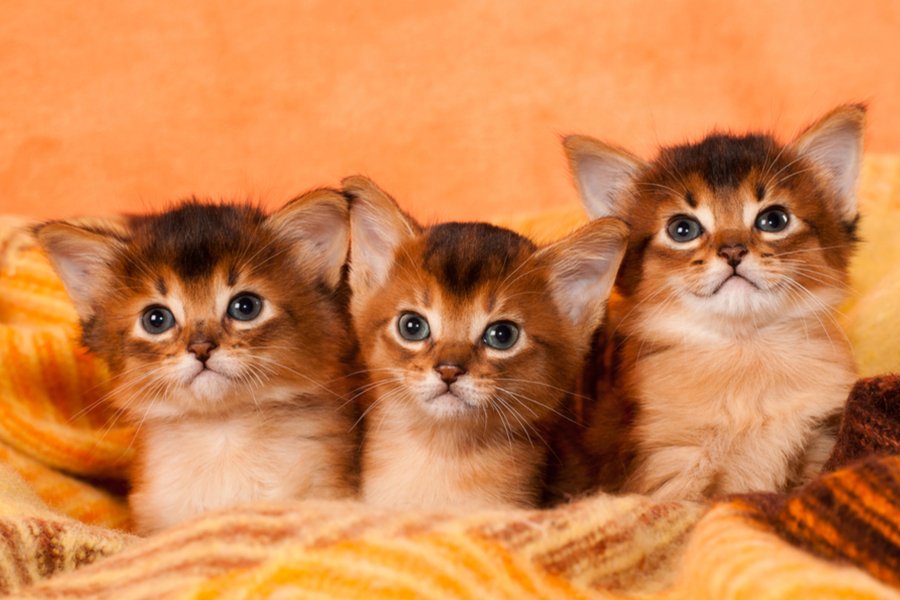
The Somali’s head forms a medium wedge with moderate contours. Their nose has a small break, and their chin is firm. Their forehead should be high with good width between their ears. Their ears are set wide apart but not low.
Their almond-shaped eyes are set well apart and expressive. There is a dark shade to emphasise their eyes. Paler spectacles also circle it, and short dark lines appear at both sides of their eye, while the inner lines are perpendicular and the outer ones point towards their ear.
Somalis have hazel, amber or green eyes. The deeper and richer, the better. Their medium-sized body is firm, agile and well-muscled. Their long legs have oval paws, and they have plumed tails, giving them a fox-like appearance.
Somalis come in a fantastic variety of colours, including the most common, red, ruddy, fawn, and blue. Most Somali cats will be in the ruddy or orange/red colour range. Well-defined ticking is vital to the Somalis. There should be at least three bands of the ticking colour on each of their hair, giving it six contrasting colour sections from base to tip.
The ticking is frequently slow to develop in Somali kittens, but there should be some indication of ticking on their shoulders at twelve weeks. Their ear tips, facial markings, tufts, heels, toe tufts, top and tip of tail are of the same colour as the ticking.
Most Somalis have semi-longhaired coats that are soft and delicate. It should be dense but lying flat along their spine. Semi-long all over, except on their shoulders, where a shorter length is allowed. Some Somalis are short-haired, with a medium-length coat that is smooth, dense and fine but close lying. Their coat will be equally uniform in length with no ruff, toe tufts, brush or breeches.
Somalis are loyal, loving, and natural clowns, yet highly intelligent and very interactive with their human companions and environment. They love to “talk” to you and help you with whatever task you are doing. No place ever goes unexplored or undiscovered to this cat, yet rarely do they knock anything off a shelf.
Somalis are fantastic feline companions who are genuinely interested in everything around them and what everyone is doing. They love a good view of their surroundings and are amused by whatever moves outside.
Because of their high energy and curiosity levels, Somalis seldom visit your lap, so if you’re looking for a relaxed lap-cat this may not be the breed for you. They enjoy outdoor exercise to burn their excess energy. If you are keeping them as an indoor cat, make sure that there are plenty of toys and scratching posts available as well as regular interactive play.
Impressively, Somalis can make a toy out of anything small and light enough to bat around like ping-pong balls, twist ties, and pieces of paper. They are outstanding climbers and explorers who
show a strong curiosity in their surroundings. This cat breed is known to be agile and athletic, and they can be found climbing up a cat tree or being active on the exercise wheel. Amused by whatever moves outside, installing a bird feeder visible through a window is a must.
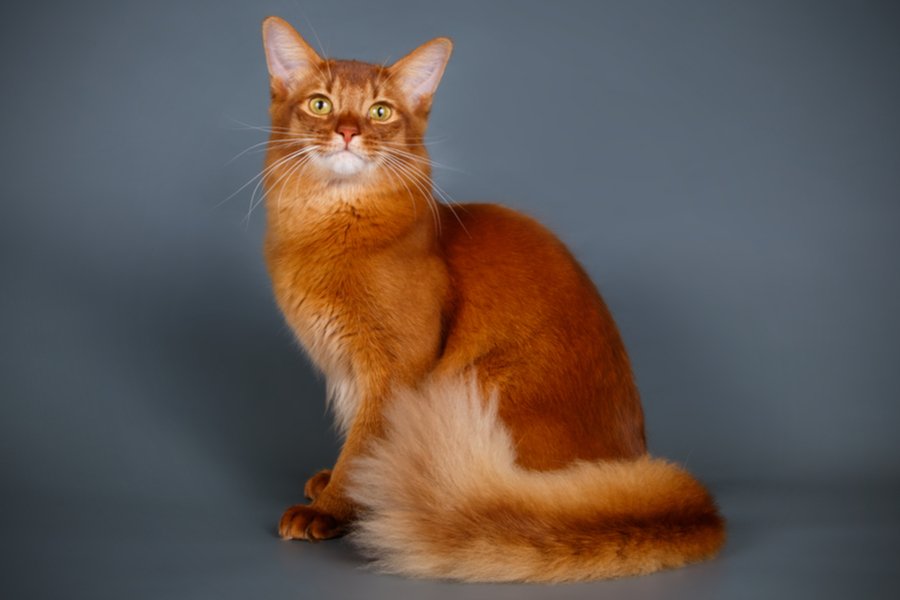
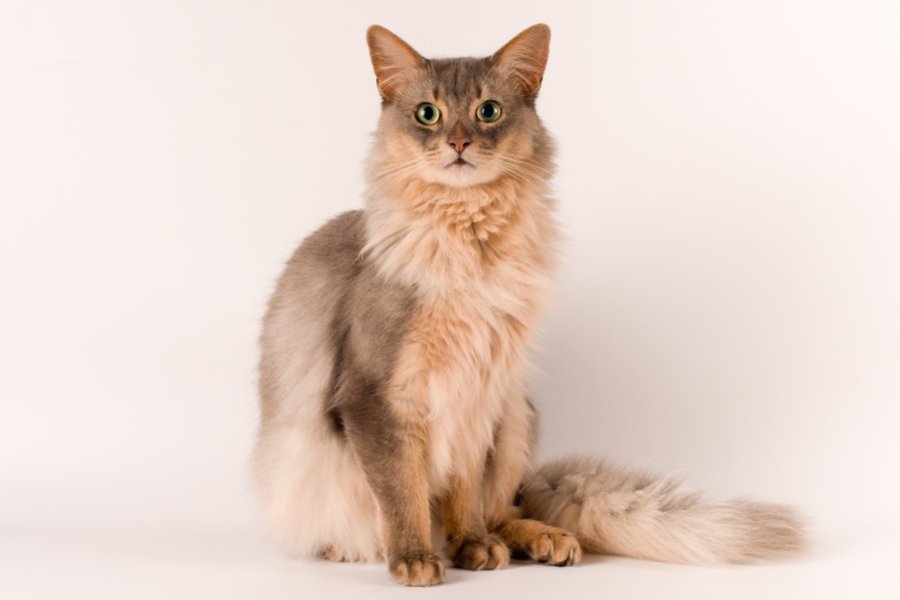
This cat breed is a brilliant cat who can learn tricks well and enjoys performing and being the centre of attention. They are smart enough to figure out how to open doors and cabinets, and some have even been known to turn on faucets.
Challenge their bright minds and keep them focused by teaching them commands, games and tricks. Give them many puzzle toys and other interactive toys that will reward them with kibbles or treats when they learn how to operate them.
Somalis are smart enough to stay away from toddlers and smaller children, but school-age children are an excellent match for the Somali’s high energy and playfulness. These good-natured and welcoming cats can get strongly dedicated to their human companion. And when a Somali is properly socialised and trained during their kittenhood, they will grow into a well-rounded and well-mannered feline companion.
Their medium-length coat requires a moderate amount of grooming. Comb their coat once or twice a week using a stainless-steel comb to eliminate dead hair, remove tangles, and distribute skin oils. During the spring, when the Somali cat is shedding their winter coat, you may need to comb them daily.
A bath is beneficial when the Somali is shedding because this will help eliminate excess hair more rapidly. When grooming, pay extra attention to their full, bushy tail that can easily get dirt and litter stuck in it.
Teach your Somali to get used to being combed or brushed at an early stage. You can start training them by using a very soft brush that doesn’t pull their coat or cause damage to their delicate skin. After brushing or combing, give your Somali a reward for behaving well. Once they are used to the regular coat care, you can use a more effective brush or comb appropriate for their age.
Although daily toothbrushing is the best for keeping your cat’s teeth and gums healthy, weekly brushing is adequate. Trim their nails twice a month or when needed. For their almond-shaped eyes, wipe the corners with a clean, soft, damp cloth to eliminate any eye discharge.
Make sure to check their ears regularly. If their ears are dirty, wipe them out with a cotton ball moistened with vet-approved ear cleaner. You can ask for your vet’s advice on how to effectively clean your Somali’s ears. If there is a foul odour, it is best to contact your vet for proper treatment.
Their litter boxes should always be clean as they can be picky about their toilet hygiene. If it is left dirty, litter particles can get stuck to their coat and cause matting and tangling.
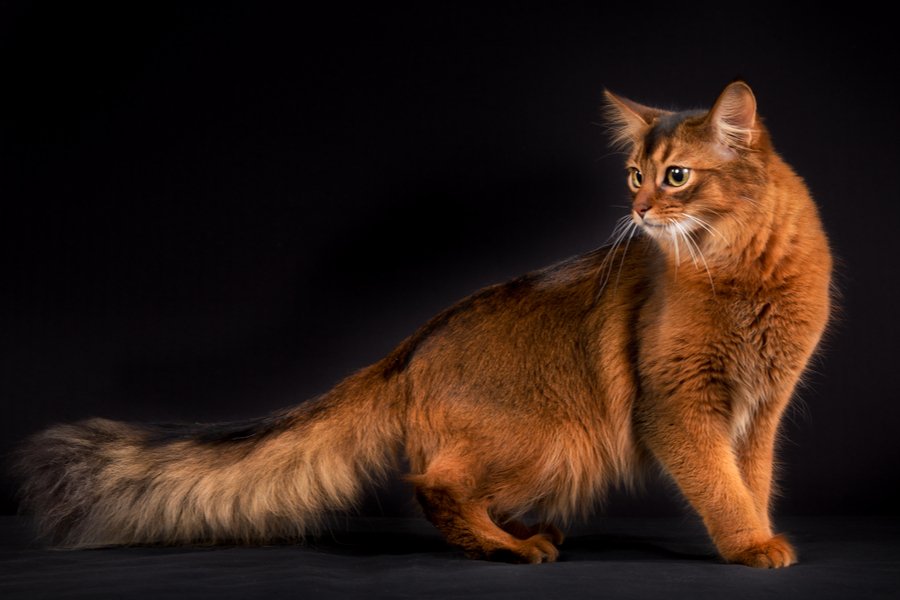
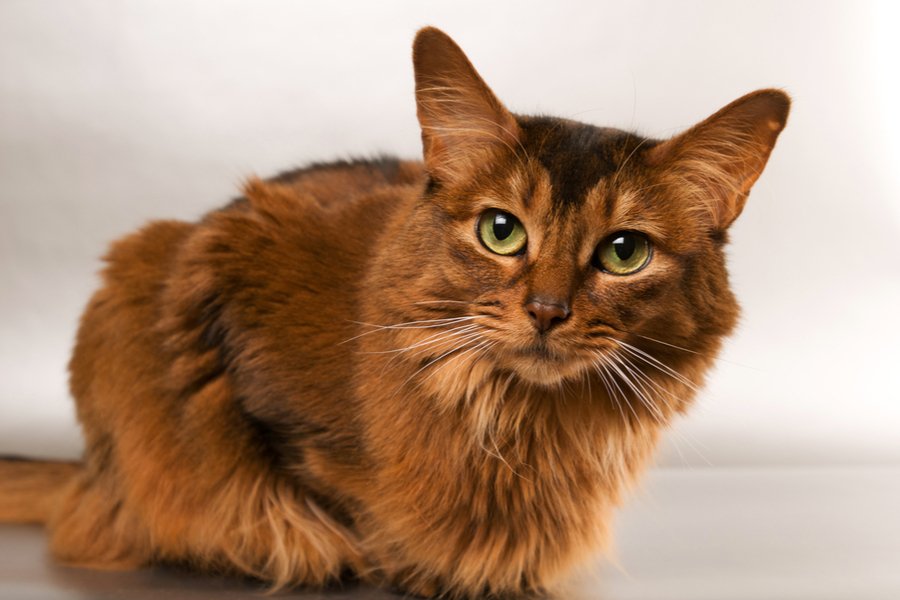
Somalis are generally healthy cats but they can experience some health conditions linked to the Abyssinian breed. For this reason, it is essential to only find a Somali cat from a registered and trusted cat breeder who runs DNA health checks on their cats and kittens. This test can check for the presence of some genetic conditions this breed is prone to.
The active, playful, and social Somalis are ideal for families with children and cat-friendly dogs. They can play fetch and learn tricks very quickly, and they enjoy the attention they receive from children who treat them respectfully. They are smart enough to get out of the way of young children but adore school-age kids because they match their energy level and curiosity. Always supervise younger kids to avoid accidents.
Nothing scares Somalis, not even dogs, and they will giddily make friends with them if they don’t give them any trouble. These amicable cats have also been known to get along well with ferrets, parrots and other animals. However, it is always recommended to introduce pets gradually and in controlled environments to make sure that they learn to get along well together.
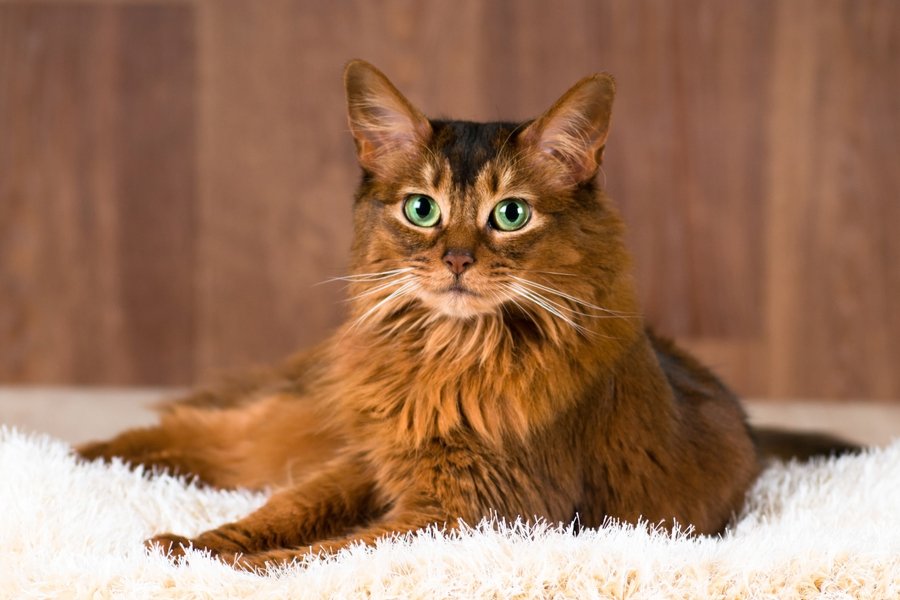

We can connect you with Breeders that are specialized in this particular breed.
See available kittens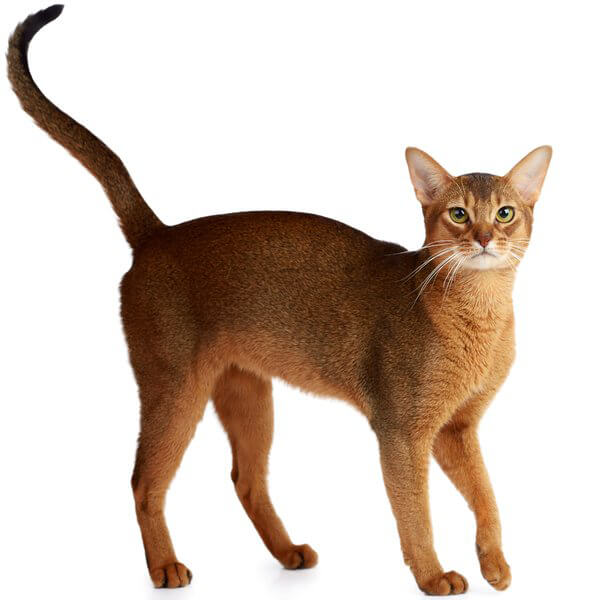
Ethiopia
Size : Medium
Coat : Short
Registration : GCCF, TICA, CFA, FIFe
Vocality : Low
Hypoallergenic : No
Grooming : Once a Week
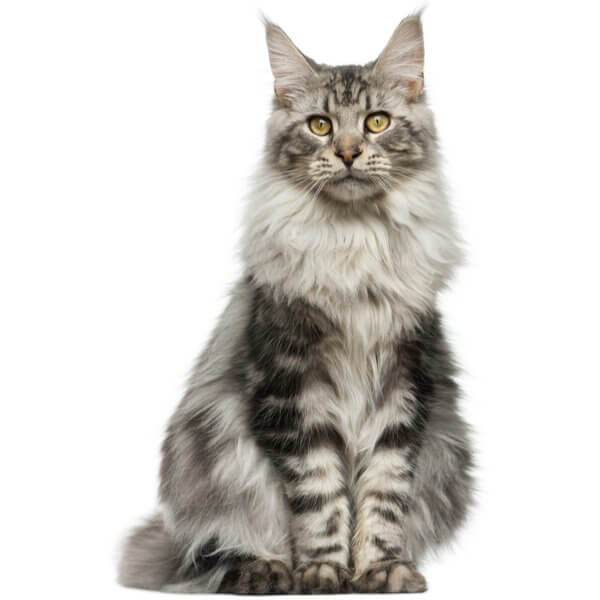
United States of America
Size : Large
Coat : Long
Registration : GCCF, TICA, CFA, FIFe
Vocality : Low
Hypoallergenic : No
Grooming : Twice a Week
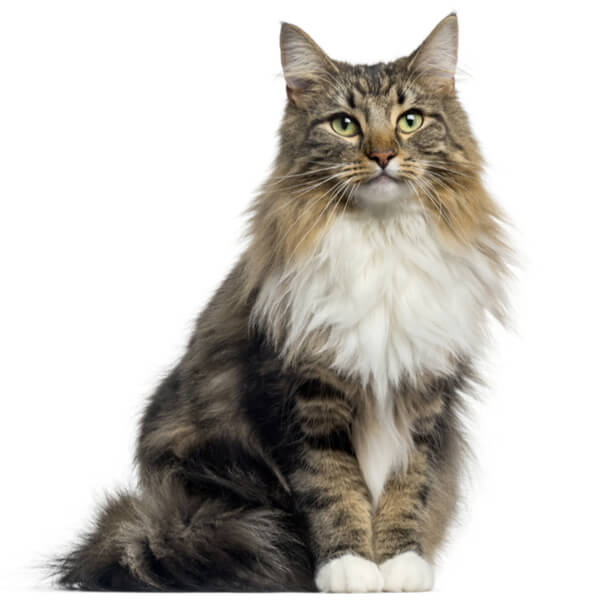
Norway
Size : Large
Coat : Long
Registration : GCCF, TICA, CFA, FIFe
Vocality : Low
Hypoallergenic : No
Grooming : Twice a Week
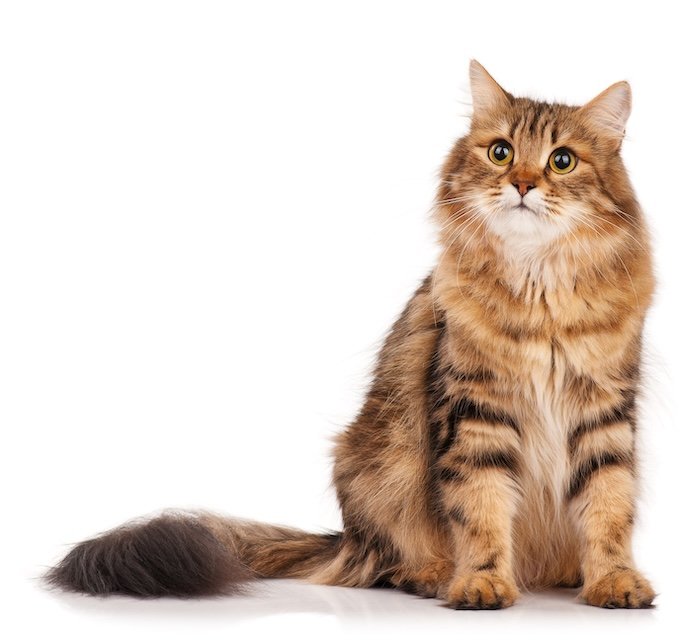
Russia
Size : Medium
Coat : Long
Registration : GCCF, TICA, CFA, FIFe
Vocality : Medium
Hypoallergenic : Yes
Grooming : Twice a Week


Need some advice?
Whether you're a first time pet owner, an experienced pet owner, a new or long-time breeder, or just curious about pets, we've got you covered!

January 17, 2024
What Is The Personality Of Russian Blue Cats?
Russian Blue cats are most known for their distinctive shimmery blue-silver coat and piercing green eyes. However, this breed’s calm and gentle temperament is what makes them shine the most in the feline world.

January 17, 2024
10 Facts About Russian Blue Cat Breed
Russian Blues are one of the most aesthetically stunning cat breeds, with a gorgeous plush silvery coat and vibrant green eyes. However, it’s not only their appearance that is beautiful; their nature is too.

January 17, 2024
How To Choose The Right Cat Breed for You
Cats can make the most fantastic animal companions; they are adorable, friendly, and loving. However, not all felines are created equal. There are many different breeds, of which each has its unique personality traits.
Need some help?
Contact us to speak to our friendly advisor, who will gladly help you find your dream pet!



We are registered in England and Wales under registration number 12568840,
and our registered office is at 58-60 Kensington Church Street, W8 4DB London, England.
© 2023 The Pedigree Paws